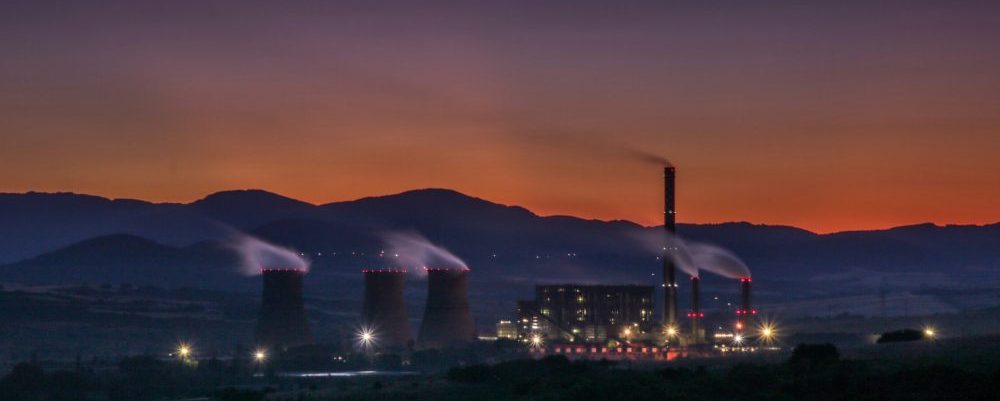Electrolyser for CO2 reduction, from concept to device level testing

Executive Summary: Carbon dioxide (CO2) electrolysis can provide a way to sustainable chemicals and fuels (e-chemicals, e-fuels). But to be viable devices which can achieve high carbon utilisation efficiencies are required. Scientific breakthroughs from the centre have led to new IP, partnerships with industry and exploitation pathways are being explored as part of the UKRI-ICURe scheme.
Background: CO2 emissions from hard to abate industries such as glass, steel and cement manufacture are likely to be captured at point of emission and the availability of a high concentration carbon source offers an opportunity for the development of sustainable and circular pathways for chemical manufacture. CO2 electrolysers can use (renewable) electricity to reduce the waste gas stream to useful products such as CO, CH4 and C2H4 at the cathode and water oxidation to produce O2 at the anode also occurs.
The challenge: Of particular interest to the chemicals industry is the co-production of CO and H2, the components of syngas, from which existing chemical infrastructure can be used to generate a wide array of platform chemicals. Historically development of electrolysers/electrodes has focussed on optimising electrical energy efficiencies for CO2 conversion, leading to optimistic techno-economic analyses with CO production by (e.g. as low as ~ £0.40 kg-1 (CO) by electrolysis).[1] This is on the order of current market prices for fossil derived CO. But such modelling is based on alkaline devices that achieve low carbon utilisation efficiencies (<10 % single pass) with pressure swing adsorption being used to recover CO2 from the exhausts containing products, CO2 and O2. Whilst this is promising the modelling assumes electrolysers can operate with impurities in the recycled feedstock (anticipated up to 5%). Working with industry partners in the foundation industries the Cowan group at the University of Liverpool have experimentally determined that existing device structures can not operate with O2 present at > 0.1% which is likely to make gas recycling/purification a significant cost factor. The need for high purity CO2 feedstock is also coupled to a likely underestimation of the costs of carbonate loss in alkali based devices.[2] Thus highlighting the need for new device structures that have high CO2 utilisation efficiencies.
UKRI interdisciplinary Centre for the Circular Chemical Economy research: Work at the Universities of Liverpool and Loughborough has focused on the development of new electrolysers that achieve high CO2 utilisation efficiencies. Our approach has been to use a bipolar membrane (BPM) electrolyser that prevents CO2 loss and the need for O2 removal. In this way we have achieved > 50% single pass conversion efficiencies for CO production, figure 1.[3]
.

Figure 1. Conventional CO2 electrolysers use a type of ion-exchange membrane that gives rise to high electrical energy conversion efficiencies, but it facilitates CO2 loss within the device, imparting purification costs and device stability penalties. The circular economy team has focused on addressing the chemical challenges associated with an alternative device structure that prevents these losses, but it requires highly selective catalysts to operate.
The BPM devices achieve high carbon utilisation efficiencies/low losses as they provide an acidic environment at the cathode (the site where CO2 catalysis occurs). This prevents the carbon dioxide from being converted to an inaccessible form (carbonate) which is then transported across the device. The challenge has been to identify catalysts and develop electrode formulations of these catalysts that can operate in the acidic environment. A breakthrough came in 2022 when we reported a class of Ni catalysts in these devices.[4] Our teams have since developed new electrodes based around Mn and Co catalysts4[5] which have continued to improve the selectivity towards the desired syngas products and device stability and the work has received significant academic attention.
Working with partners towards exploitation: As a result of the research in the centre, and previous underpinning discoveries in CO2 catalysis at the University of Liverpool, 2 patents by the University of Liverpool have now been filed and the team has continued to work on the underpinning science and on exploitation pathways. Technical challenges still exist, particularly around improving the key membrane in the device, but further research enabled by UKRI support (EP/W033283/1) focused on membrane development, holds great promise. The technology is at an early stage, but engagement with industry has been strong. An early proof-of-principle study, supported in part by the University of Liverpool Partnership Innovation Fund (part of the institutions HEIF allocation) examined the potential for moving beyond the direct production of CO in the devices developed with the aim of directly producing ethylene. Although ultimately it was concluded direct ethylene production was not feasible in this short study it did strengthen an emerging relationship with INEOS Technologies who partnered on the project. Re-focusing on the electrochemical production of CO from CO2 we have since launched a study enabled by the UKRI Industrial Decarbonisation Research and Innovation Centre, to examine how the devices operate with real-world captured CO2, provided by our industrial partners, who include c-capture, NSG-Pilkington and Netzero-NW. This is a key step providing the data to show if the new technology for carbon dioxide utilisation is compatible with that of one of the UK’s lead carbon capture companies. The strong levels of interest coupled to promising early technical results for our devices has led the team at the University of Liverpool to very recently join the UKRI-Innovate ICURe pre-accelerator programme for discovery stage activities, allowing a researcher to take part in market discovery boot-camps and develop www.CO2volt.com. New exploitation plans are now being developed in partnership with the Universities IP team for the IP generated in the centre.
References:
[1] H. Shin, U. Hansen and F. Jiao, Nature Sustainability, 4, 911–919 (2021)
[2] J. A. Rabinowitz and M. W. Kanan, Nature Communications., 11, 5231, (2020)
[3] B Siritanaratkul, et al., Advanced Materials Interfaces, 2300203, (2023)
[4] B Siritanaratkul, et al., Journal of the American Chemical Society, 144, 17, 7551 (2022)
[5] C. Eagle, et al., Sustainable Energy Fuels, 7, 2301-2307 (2023)
Researchers: